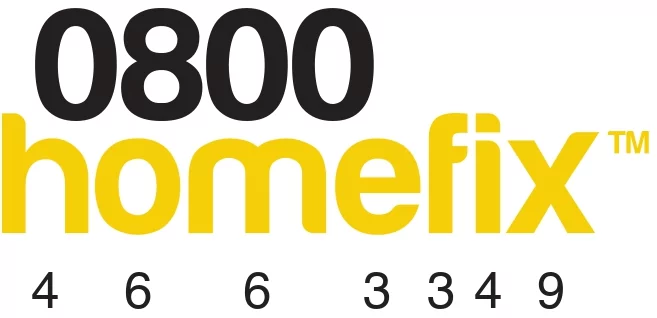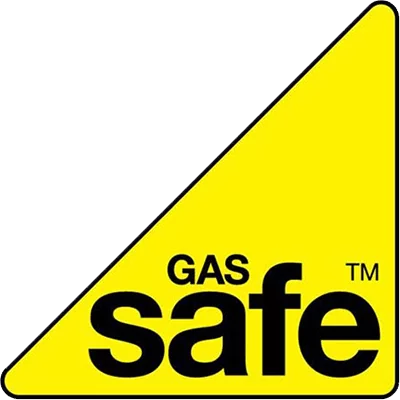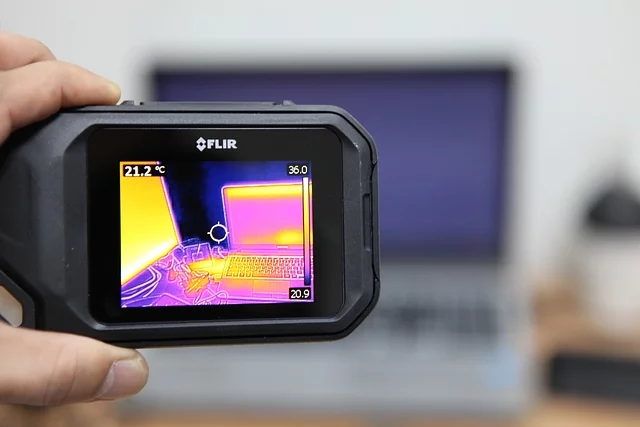Thermal imaging technology has revolutionized the way we detect leaks in buildings and other structures. With the ability to detect temperature differences, thermal imaging cameras can identify areas where heat is escaping or entering a building, indicating the presence of leaks. This technology has become an essential tool for building inspectors, energy auditors, and maintenance professionals.
Leak detection is one of the most significant applications of thermal imaging technology. It can be used to detect leaks in roofs, walls, windows, doors, and other areas. By identifying areas where heat is escaping, thermal imaging cameras can help building owners and managers save on energy costs and reduce their carbon footprint. Additionally, thermal imaging technology can detect leaks in pipes, which can be costly and dangerous if left undetected. Overall, thermal imaging leak detection is an effective and efficient way to identify and address leaks in buildings and other structures.
Fundamentals of Thermal Imaging
Thermal imaging is a non-destructive testing method used to detect and visualise temperature differences in objects and surfaces. It is a powerful tool that can be used in a variety of applications, including building diagnostics, electrical inspections, and mechanical inspections.
Principles of Infrared Technology
Infrared technology is the foundation of thermal imaging. Infrared radiation is emitted by all objects with a temperature above absolute zero. Thermal imaging cameras detect this radiation and convert it into a visible image. The temperature of an object can be determined by measuring the intensity of the radiation emitted.
Components of Thermal Imaging Cameras
Thermal imaging cameras consist of several components that work together to produce a thermal image. The main components include:
-
Detector: The detector is the heart of the thermal imaging camera. It is responsible for sensing the infrared radiation emitted by objects and converting it into an electrical signal.
-
Optics: The optics of a thermal imaging camera are responsible for focusing the infrared radiation onto the detector. They also determine the field of view and spatial resolution of the camera.
-
Display: The display is where the thermal image is displayed. It can be either a built-in display or an external monitor.
-
Image processing: Image processing algorithms are used to enhance the thermal image and make it easier to interpret. These algorithms can be used to adjust the contrast, brightness, and colour palette of the image.
Thermal Sensitivity
Thermal sensitivity is a measure of the smallest temperature difference that a thermal imaging camera can detect. The higher the thermal sensitivity, the smaller the temperature difference that can be detected. This is an important parameter to consider when selecting a thermal imaging camera for a specific application.
Overall, understanding the fundamentals of thermal imaging is crucial for anyone looking to use this technology. By understanding the principles of infrared technology and the components of thermal imaging cameras, we can make informed decisions when selecting and using thermal imaging equipment.
Identifying Leaks with Thermal Imaging
Thermal imaging is a powerful tool that can help us identify and locate water leaks in buildings. By detecting temperature differences, we can locate areas where moisture is present and pinpoint the source of the leak. In this section, we will explore how thermal imaging can be used to detect water leaks and locate moisture sources.
Detecting Water Leaks
Water leaks can be difficult to detect, especially if they are hidden behind walls or in other inaccessible areas. However, thermal imaging can help us identify areas where water is present. When water evaporates, it cools the surrounding area, creating a temperature difference that can be detected with a thermal imaging camera. By scanning the walls and ceilings of a building with a thermal imaging camera, we can quickly identify areas where water is present and determine the source of the water leak itself.
Locating Moisture Sources
Moisture can enter a building in many ways, including through leaks in the roof, walls, and windows. Once moisture has entered a building, it can cause damage to the structure and create health hazards such as mold and mildew. By using thermal imaging, we can locate moisture sources and take steps to prevent further damage.
Thermal imaging can detect areas where moisture is present by identifying temperature differences. Moisture is often cooler than the surrounding area, so it will appear as a darker area on a thermal image. By scanning the walls, floor and ceilings of a building, we can identify areas where moisture is present and take steps to remove it.
Temperature Differences in Leak Detection
Thermal imaging relies on temperature differences to detect leaks and moisture. By scanning a building with a thermal imaging camera, we can identify areas where the temperature is different from the surrounding area. These temperature differences can indicate the presence of leaks or moisture.
When using thermal imaging for leak detection, it is important to keep in mind that temperature differences can be caused by factors other than leaks or moisture. For example, a hot water pipe running through a wall can create a temperature difference that may be mistaken for a leak. However, by using our knowledge and expertise, we can accurately identify areas where leaks and moisture are present.
In conclusion, thermal imaging is a powerful tool that can help us identify leaks and moisture sources in buildings. By detecting temperature differences, we can quickly locate areas where water is present and take steps to prevent further damage. Whether you are a homeowner or a building manager, thermal imaging can help you protect your property and ensure the safety of those who use it.
Applications of Thermal Imaging in Leak Detection
Thermal imaging is a non-invasive and effective technique used to detect hidden water leaks, leaks and water intrusion. It has become a popular method for building inspection, industrial, and commercial use. In this section, we will discuss the various applications of thermal imaging in leak detection.
Residential Applications
Thermal imaging is commonly used in residential buildings to detect water damage caused by hidden leaks. It is an effective method to identify the source of water intrusion without causing any damage to the property. By using thermal imaging, we can easily detect the temperature differences caused by water leaks and determine the extent of damage caused by the leak.
Industrial and Commercial Use
Thermal imaging is widely used in industrial and commercial settings to detect leaks in pipes, tanks, and other equipment. It is an effective method to identify leaks in areas that are difficult to access or inspect. By using thermal imaging, we can quickly identify leaks and prevent costly downtime caused by equipment failure.
Thermal imaging is also used in building inspection to detect water intrusion and leaks. It is an effective method to find water leaks, identify areas of a building that are prone to water damage and prevent further damage. By using thermal imaging, we can detect areas of the building that are at risk of developing mould and take necessary action to prevent it.
In conclusion, thermal imaging is a valuable tool for detecting hidden leaks and water intrusion. It is an effective method for building inspection, industrial, and commercial use. By using thermal imaging, we can quickly identify leaks and prevent costly damage caused by underground water leak and intrusion.
Advantages of Non-Invasive Leak Detection
At our company, we believe that non-invasive leak detection techniques offer several advantages over traditional methods. In this section, we will explore the benefits of non-destructive techniques and compare traditional and thermal imaging methods.
Benefits of Non-Destructive Techniques
Non-invasive leak detection techniques, such as thermal imaging and pinless moisture meters, allow us to detect leaks without causing damage to the property. This means that we can accurately and locate water leaks without the need for costly repairs or invasive procedures.
In addition, non-destructive techniques are highly accurate, allowing us to pinpoint the exact location of the leak. This means that we can quickly and efficiently repair the leak, saving our clients time and money.
Comparing Traditional and Thermal Imaging Methods
Traditional leak detection methods, such as visual inspection and pressure testing, can be time-consuming and inaccurate. These methods often require invasive procedures, which can cause damage to the property and lead to additional repair costs.
Thermal imaging, on the other hand, allows us to detect leaks quickly and accurately, without the need for invasive procedures. This method uses infrared technology to detect temperature differences, allowing us to locate leaks that are not visible to the naked eye.
Overall, we believe that non-invasive leak detection techniques offer several advantages over traditional methods. They are highly accurate, non-destructive, and can save our clients time and money.
Optimising Thermal Image Leak Detection
When it comes to thermal image leak detection, accuracy and resolution are crucial for both detecting leaks and locating leaks quickly and effectively. In this section, we will discuss how to optimise thermal image leak detection by improving accuracy and resolution, as well as factors that can affect leak detection.
Improving Accuracy and Resolution
To improve accuracy and resolution, it is important to use high-resolution thermal imaging cameras such as the FLIR E8 or Fluke. These cameras can capture more detail and provide clearer images, making it easier to both detect moisture and locate leaks accurately.
Another factor that can improve accuracy is evaporation. When a liquid leaks, it evaporates and creates a temperature difference between the leak and the surrounding area. This temperature difference can be detected by a thermal imaging camera, making it easier to locate the leak accurately.
Capacitance is another factor that can affect accuracy. Capacitance is the ability of a material to store an electrical charge. When a liquid leaks, it can affect the capacitance of the surrounding materials, creating a measurable difference that can be detected by a thermal imaging camera.
Factors Affecting Leak Detection
Weather conditions can affect leak detection. For example, wind can cause the liquid to evaporate faster, making it more difficult to detect the leak accurately. Similarly, rain or cold front can cool the surface, making it harder to detect the temperature difference caused by the leak.
Manufacturers have also developed various techniques to improve leak detection. For example, some manufacturers have developed algorithms that can detect leaks automatically, while others have developed cameras with multiple sensors that can detect leaks from different angles and provide a more accurate location.
In conclusion, optimising thermal image leak detection requires using high-resolution thermal cameras only, considering factors such as evaporation and capacitance, and taking into account weather conditions and manufacturer techniques. By doing so, we can improve accuracy and resolution and detect and locate leaks quickly and effectively.
Frequently Asked Questions
How effective is a thermal camera for identifying water leaks?
Thermal imaging cameras are highly effective in identifying water leaks. They work by detecting differences in temperature, which can indicate the presence of moisture. When water leaks, it cools the surrounding area, creating a temperature difference that can be picked up by a thermal camera. This makes it easier to identify leaks that may not be visible to the naked eye.
What types of leaks can be detected with thermal imaging technology?
Thermal imaging technology can detect a wide range of leaks, including water leaks, air leaks, and gas leaks. It can also be used to detect leaks in roofs, walls, and floors.
Can thermal imaging cameras be hired for one-time use in leak detection?
Yes, thermal imaging cameras can be hired for one-time use in leak detection. This is a cost-effective solution for those who do not want to purchase a camera outright. Hiring a thermal imaging camera can also be a good option for those who only need to use it once or twice.
What is the principle behind infrared leak detection?
Infrared leak detection works by detecting differences in ambient temperature. When a gas or liquid leaks, it cools the surrounding area, creating a temperature difference that can be picked up by an infrared camera. This makes it easier to identify leaks that may not be visible to the naked eye.
Is it possible to detect air leaks in a building using thermal imaging?
Yes, it is possible to detect air leaks in a building using thermal imaging. Air leaks can be detected by looking for temperature differences around doors, windows, and other areas where air can escape.
What advantages do FLIR cameras offer in the context of leak detection?
FLIR cameras offer several advantages in the context of leak detection. They are highly sensitive and can detect even small temperature differences. They also offer high-resolution images, which make it easier to identify leaks. Additionally, FLIR cameras are easy to use and can be operated by anyone with basic training.



